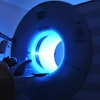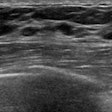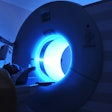Patient awareness of out-of-pocket imaging costs may prompt them to cancel or avoid needed care, according to a commentary published October 14 in the Journal of the American College of Radiology (JACR).
The findings underscore a need for policies that integrate price transparency initiatives with effective patient-provider discussions at the time the imaging exam is ordered, wrote a team led by medical student George Grant of the University of California Irvine (UCI) and colleagues Ali Rashidi, MD, of Emory University in Atlanta; Ruth Carlos, MD, of the University of Michigan in Ann Arbor; and Gelareh Sadigh, MD, also of UCI.
"While the goal of price transparency is improving informed decision-making, some patients may hesitate to proceed with their exam after learning the expected costs," Grant and colleagues explained. "This hesitation may be exacerbated if patients make decisions without consulting their physicians."
Imaging exams are "shoppable services," and price transparency tools can help patients make cost-effective choices. In 2021, the U.S. Center for Medicare and Medicaid Services (CMS) put into place the Hospital Price Transparency rule, which mandated that hospitals disclose the cost of services online as well as via a consumer-accessible list that includes prices for each. Yet how out-of-pocket costs affect patients' adherence to recommended care remains unclear, the authors noted.
To fill the knowledge gap, Grant's team explored any associations between out-of-pocket costs before undergoing imaging and patient decisions about whether to complete the exam at all. The group conducted a study using data from two previous works, one performed between November 2022 and February 2023 that consisted of 345 adults who completed outpatient CT, MRI, or PET/CT exams at UCI, and another conducted between November 2022 and May 23 that consisted of 187 adults scheduled for these same exams at the same centers but who canceled or did not attend their appointment.
Study participants were asked if out-of-pocket imaging exam costs had been explained to them and if so, how they had received the information (for example, from an imaging center or insurance price estimator, an inquiry to the insurer or imaging center, or a web search). Grant and colleagues also tracked patient demographic data, area deprivation index (ADI) score, and self-reported financial anxiety (this last was measured using the Comprehensive Score for Financial Toxicity (COST) questionnaire, which scores between zero and 44 with lower scores indicating higher levels of financial worry).
The group found the following:
- 15.4% of patients had pre-imaging out-of-pocket cost knowledge before their appointment.
- The most common source of this knowledge was direct inquiry to the insurance company (23.4%); only 11.1% used a health insurance estimator.
- Only 11.9% of patients who completed their imaging exam had pre-imaging out-of-pocket cost knowledge; of those patients who canceled their exam, 21.9% reported this knowledge.
The authors noted that "if there is no patient-physician interaction in the transparency process (e.g., the patient simply obtaining the price from price estimator or billing office) as seen in this study, then it may lead to care delays," and urged the use of initiatives that can help patients better understand healthcare costs.
"[Financial] screening and proactive financial counseling interventions that can address patients' concern about [out-of-pocket costs] and mitigate medical financial hardship should be integrated into patient interactions," they concluded.
The full study can be found here.



















